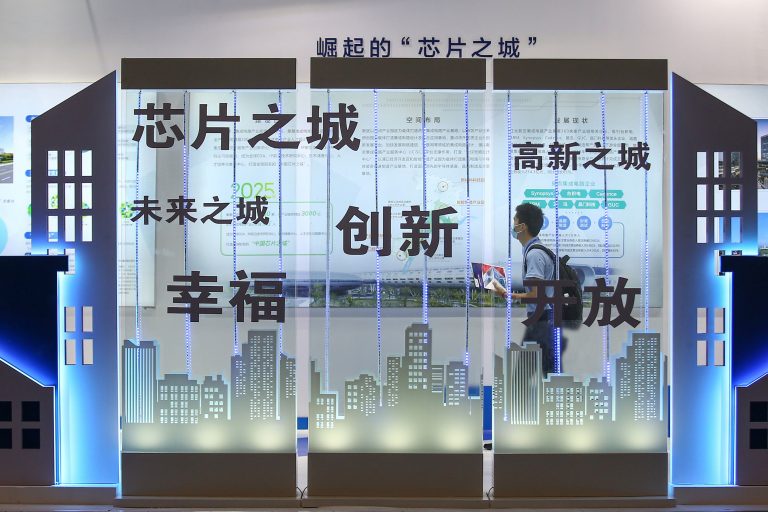The debt situation of China’s local governments continues to worry the global financial community. In 2022, China used a third of its public spending to organize lockdowns and mass quarantines, as well as the daily COVID-19 tests that were mandatory for hundreds of millions of citizens.
China is also currently in the middle of a real estate crisis, which is seriously hurting local governments. In the country, provinces are not allowed to levy taxes, even though they have to pay for public expenses such as health and education.
According to an article on the Rhodium Group website, local governments are responsible for about 85 percent of China’s official expenses, but only receive 60 percent of the total in taxes, a sum that has been further reduced by the pandemic.
To make money, local governments rely on activities like selling or managing land; all land is owned by the government. Land is sold or given to companies to manage for planning and development. The sale of land is a major source of resources, generating more than 40 percent of local government revenue.
According to a BBC report, last year the revenue from the practice of selling (or managing) land saw a decrease of 23.3 percent, a loss that amounts to about US$288 billion. This caused several negative effects across the country.
Success
You are now signed up for our newsletter
Success
Check your email to complete sign up
Aljazeera published an article explaining that out of China’s 31 provinces, 22 saw a drop in revenue in the year 2022. All municipalities in all 31 provinces, with the exception of Shanghai, recorded fiscal deficits, according to the Chinese National Bureau of Statistics.
Several international media commented on the debt situation of China’s local governments, saying that the outlook is worrying and the scenario seems rather unstable.
In a graphic projection prepared by the S&P Global Ratings agency, it can be seen that in 2022, two-thirds of China’s provinces had public debt above 120 per cent, whereas in 2018, the figure was around 77 percent.
The Chinese government said that the 31 local governments in total had a debt of around US$5.1 trillion, an increase of as much as 66 percent from three years earlier. But some International Monetary Fund reports instead state that this debt stands at around US$9.5 trillion, which is about half of the country’s entire economy.
Hidden debts
CNN published an article stating that some experts consider China’s debt to be around 18 trillion dollars, 10 trillion of which is so-called ‘hidden debt’. One of the major causes of this debt is said to be local governments. One example is China’s local-government financing vehicles (LGFVs), or companies owned by local governments that have to make sure they meet Beijing’s growth targets.
The Chinese Communist Party (CCP) prohibits local authorities from borrowing money from banking institutions or selling their bonds directly in the market. LGFV is a system that is used to, in essence, circumvent these prohibitions.
The CCP has put a lot of pressure on local governments in recent years to push economic growth in the country, especially after the 2008 financial crisis. But the local authorities cannot keep up with the public spending needed just by running on the budget given to them by the central government. They therefore rely on LGFVs to spend money directly on e.g. bridges, roads, subways and other long-term projects.
According to a Nikkei Asia article, LGFV bonds are popular with investors because they carry with them the implicit security that, since the local government is in fact backing them, if the “vehicle” were to default, it would step in to pay back the sums owed.
But there are several problems with LGFVs. One of them is that they are very opaque and difficult to monitor. Andrew Collier, Managing Director at Orient Capital Research in an article by Reuters, stated how “the LGFVs have become the black hole of the Chinese Financial System. They have been used to fill the gap between local government revenue and expenditure.”
Another problem with this system is that LGFVs rarely make enough profit to repay their debts. This is why most of them are subject to constant cash injections and financial aid to remain solvent.
There are also dangerous implications for the economy. According to a study by the Center for Strategic and International Studies, one of the most important financial risks “is the possibility that LGFV bonds might start defaulting in large numbers.”
Even Beijing has admitted the risks concerning local government debt. Chinese Premier Li Keqiang recently declared the government’s intention to “prevent and defuse local government debt risks.”
The Politburo, the CCP’s most important decision-making body, has declared its intention to increase oversight of local government debt management and prevent the rise of more hidden debt.
According to Michael Pettis, Professor at Peking University, “if local governments walk away from LGFVs, that simply throws the burden of loss onto local banks who lent money to the LGFVs, and these will have to be bailed out anyway by direct or indirect transfers.”
Analysts consider that if the trend remains this way, local governments will be forced to cut their public spending, postpone investments or take other initiatives to keep creditors at bay, which will negatively impact growth. But it seems that this is already happening.
This seems to be already underway in some communities, as recently reported by Al Jazeera, where local authorities are auctioning off some public schools, terminating contracts with private suppliers, and cutting pensions.













